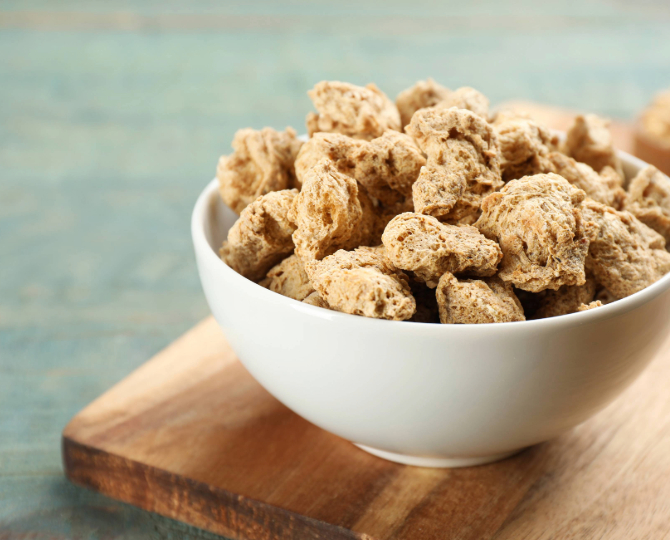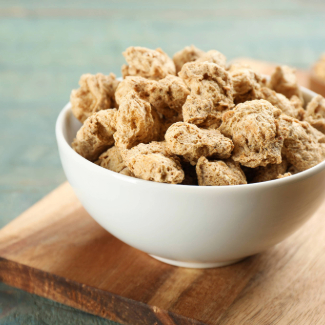More and more people are discovering textured vegetable protein (TVP), a high-fibre vegetarian protein option. TVP is a great way to add variety to your diet without having to spend more or learn any new recipes. It can be used to substitute ground beef in many common recipes, so you can really make it your own. Here’s why this affordable, versatile, and easy-to-store staple deserves a prime spot in your pantry.
What is TVP?
TVP is traditionally made from soy, but there’s also a pea-based version, which is good news if you’re allergic or sensitive to soy. It’s made by extracting the oil from whichever legume is being used, then processing the remaining high-protein plant matter into small, dehydrated flakes. Once dried, TVP keeps for a very long time at room temperature, making it a practical, shelf-stable ingredient that you can really stock up on.
A nutritional powerhouse
TVP has many nutritional benefits:
- One cup of dry TVP contains some 20 g of protein.
- As a source of fibre, it helps you feel full and supports your digestive health.
- Unlike meat, it contains no cholesterol or saturated fat, making it a heart-healthy choice.
Even if you’re not strictly vegetarian or vegan, incorporating more plant-based protein into your diet has numerous health benefits.
Easy to cook and easy on your wallet
Another benefit of TVP is that it’s very affordable. Comparing equivalent amounts, it often costs half to a third as much as ground beef. It doesn’t need to be refrigerated, takes up very little space, and has a long shelf life. All that makes it a very appealing option for cooking more at home and balancing your budget.
How to use TVP
TVP may be nutritious, budget-friendly, easy to store, and quick to prepare—but you still need to know how to use it! Luckily, you can easily learn all the tips and tricks to start adding it to your favourite dishes.
Before it’s cooked, TVP usually needs to be rehydrated. This gives it a soft texture similar to ground beef. You can rehydrate your TVP by pouring hot broth or boiling water over it, then letting it rest for a few minutes. The amount of liquid and the rest time will depend on the size of your TVP flakes. So it’s best to follow the instructions on the packaging.
Once your TVP is rehydrated, you can use it as you would ground beef. If you need recipe ideas, try vegetarian tacos, vegan chili to top off your nachos, or a meat-free lasagna (recipes in French only). If you’re making something with a lot of liquid, such as a sauce, stew or soup, you can add the TVP directly to the pot and simmer it for around 15 minutes. Depending on the texture you want, you can add a little tomato sauce or broth to make up for the liquid the TVP will soak up.
TVP can also be eaten dry! Add it to homemade granola or sprinkle it on yogurt or salad for a little extra crunch. It has a neutral flavour, so you can make it as savoury or as sweet as you like.

